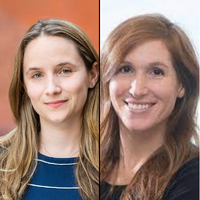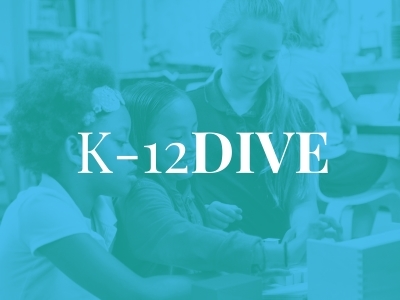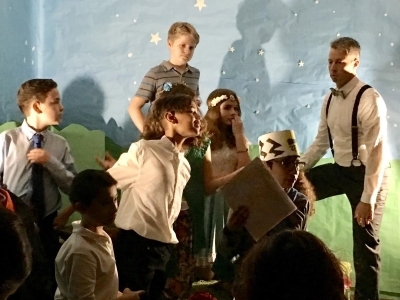Reimagining Schools: The Need for Autonomy and Humanity
Topics

Today’s learners face an uncertain present and a rapidly changing future that demand far different skills and knowledge than were needed in the 20th century. We also know so much more about enabling deep, powerful learning than we ever did before. Our collective future depends on how well young people prepare for the challenges and opportunities of 21st-century life.
With these research-based practices, we can reimagine schools in both large and small ways to be the places teachers and students are saying they need to do their best work.
The status quo of K-12 schooling has been completely disrupted by the COVID-19 pandemic. While this is indisputable, the future of schooling and how schools can and must reimagine themselves in the coming years and decades is hotly debated. Many teachers and students do not want to return to the “normal” of pre-pandemic days. Instead, a research report by MIT Teaching Systems Lab found that both teachers and students wish to use insights from the experience of remote learning to redesign school in profound ways. The two primary themes that emerged are the wish for greater autonomy and humanity. This vision of education is not only desired by educational stakeholders, but it is also aligned with decades of learning science research on what effective and enduring learning looks like.
We have chosen three primary areas of research and practice that offer educators actionable strategies to increase autonomy and humanity in schools. First, school design must acknowledge that emotion and cognition are inextricably linked. Second, teachers need the flexibility to prioritize content and give students enough time to master new material. Finally, students should be empowered to set individual goals and have a greater ability to move at their own pace. While these recommendations may not be new or surprising, they call our attention to an opportunity for schools to expand how they support teachers and students as complex human beings and honor what we know about how learning unfolds most effectively.
Emotion and Cognition
During remote learning, the power of human connection in schools was weakened. Above all else, school leaders must be intentional about creating time for positive teacher-student relationships and a welcoming school climate. These are foundational for learning to occur. Regardless of age, all humans need to feel as if they are an accepted and valued contributor to cultivate a sense of belonging. Students with a belonging mindset are able to be their authentic selves meaning their cognitive energy is available for learning. Attention is no longer bifurcated between academics and social threat. A 2018 meta-analysis of 65 studies found that when students perceive teachers as supportive, both instructionally and emotionally, students have higher rates of positive academic emotions (PAEs) like interest and enjoyment. These positive emotions lead to positive subsequent impacts on student achievement outcomes. At the same time, to promote teacher wellbeing, administrators can focus on maintaining social support networks for their teachers. Providing opportunities for teachers to develop materials together, share learning experiences, and build relationships promotes an overall culture of collaboration within schools. Schools may also consider more innovative support for teachers such as “flex days” to retain high-quality teachers in the classroom.
Time to Learn
Due to reduced instructional time during the pandemic, teachers adapted their instruction to make sure that students learned what was most critical, often covering less instructional material than in previous years. Often, school days are a “race against the clock” for teachers, who are required to cover too much content in too little time. As a result, many students are left behind, unable to keep up and deeply learn what’s being taught. Even those students who perform well on tests frequently do not retain the knowledge long term. In order to gain mastery with a topic, students must have enough time to acquire component skills, practice integrating them, and know when to apply what they have learned. Educators must have the time to employ instructional strategies that provide students with enough practice and reflection across contexts so that they can advance toward mastery. Educators can embed “desirable difficulties” into the curricular design for their students to aid in deeper processing. Some examples of desirable difficulties include spacing learning sessions apart, varying the setting of where learning happens, and having students frequently quiz themselves. School administrators can support educators by providing them training on memory encoding and retrieval strategies that aid students’ long-term memory and application of knowledge.
Competence and Autonomy
Remote learning gave students a taste of what it would be like to have more independence and agency in their own learning. Self-determination theory of motivation suggests that people—adults and children alike—are intrinsically motivated when they are offered opportunities for competence, autonomy, and relatedness. In simple terms, people want to feel that they have confidence in their abilities, have the power to make choices, and are supported by the people around them. In the classroom, competence is fostered by providing students with an appropriate level of challenge that allows for supported growth. Teachers can first create a classroom structure where not all students work on the same content at the same time, using models like blended instruction, personalized learning, or project-based learning. With a new structure in place, teachers can differentiate instruction and allow students more agency in moving through the material. Schools can begin empowering students by providing them more robust instruction on not only what to learn but how to learn. The resulting executive function skills will aid students both personally and scholastically.
The pandemic has shifted our society in ways that are just beginning to be understood. At this moment, there is a vast exodus of educators and leaders from the profession—the pandemic has exacerbated an already difficult job. Teachers and students are speaking up and saying what they need in order to do their best work. Let’s make sure we listen and reimagine schools in both large and small ways to be places adults and children can thrive.
Photo by RODNAE Productions.




